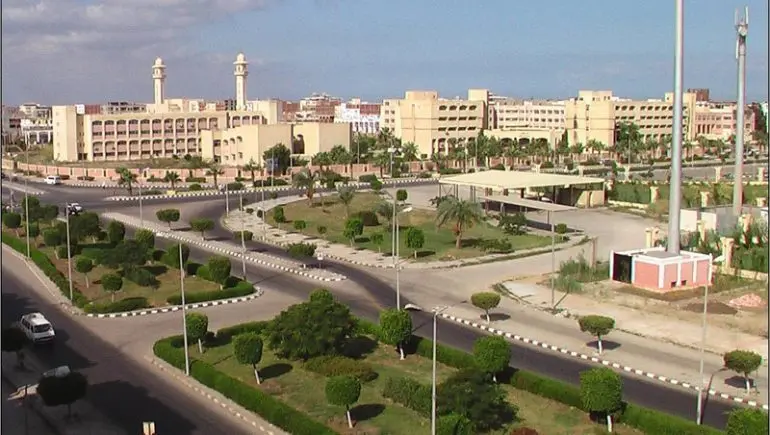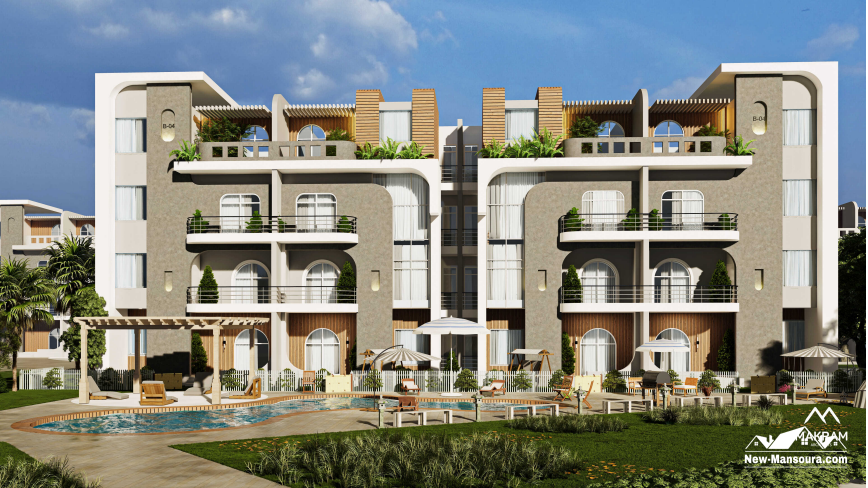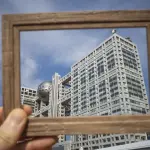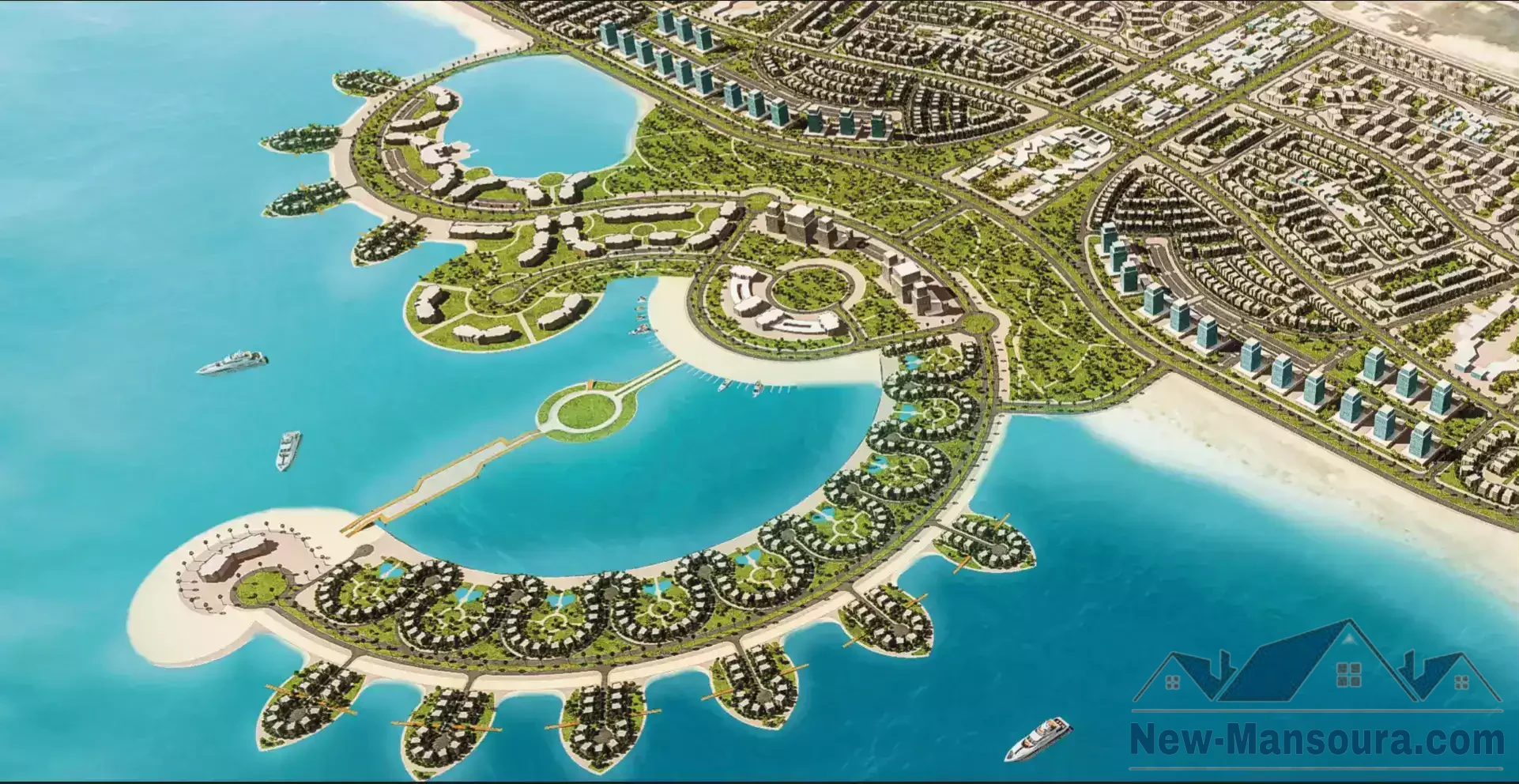A City at the Crossroads of Development New Damietta City is considered one of the most prominent second-generation cities launched by the New Urban Communities Authority in the 1980s. But today, with the evolving market and the growing need for integrated urban areas, New Damietta has transformed from merely being an urban extension of the old Damietta into a multifunctional hub that combines industrial, residential, and service activities.
Here arises the fundamental question: How can a balance be achieved between being a massive industrial zone and a comfortable residential area at the same time?
New Damietta hosts a highly developed industrial zone spread over 608 feddans, accommodating more than 832 industrial projects with investments exceeding 70 billion EGP, making it one of the largest industrial zones in Egypt. These projects cover a wide range of sectors including furniture, food industries, plastics, ready-made garments, and engineering industries.
The state aims to further strengthen this zone by injecting significant investments into infrastructure development, with 70 million EGP allocated to upgrading roads, pavements, and public utilities within the industrial area.
"Alongside its industrial development, New Damietta is keen on providing a distinguished residential environment for its citizens. The city includes a range of modern housing projects that cater to different segments, starting from social housing units up to villas and luxury compounds."
"Looking for a unit in New Damietta City? Get the best offer now!"
"The Industrial Infrastructure: The Heart of the Local Economy"
Industrial Infrastructure: The Backbone of New Damietta’s Economy
The industrial zone in New Damietta represents the beating heart of the city’s economic activity, encompassing vast areas dedicated to factories as well as small and large enterprises alike. By providing an integrated environment of infrastructure and logistical services, the city has become a prime destination for investors, contributing to job creation and stimulating local economic growth.
The industrial zone hosts more than 800 diverse projects in sectors such as furniture, food industries, ready-made garments, and engineering industries, with investments exceeding 70 billion EGP. This makes New Damietta a leading model of sustainable industrial development in Egypt.
Historically, Damietta has been known as the “Capital of Furniture Industry” in Egypt and the Middle East. For this reason, the state has allocated fully equipped industrial zones in New Damietta that include:
Workshops and showrooms for furniture, considered the backbone of the local economy.
Small and medium-sized factories that support complementary sectors such as wood, furnishings, and paints.
A large industrial area strategically connected to transport networks and nearby seaports, particularly Damietta Port.

[/custom-html]
"Residential Areas: Meeting the Needs of the City’s Residents"
"Government Policies to Achieve the Balance"
Government Policies to Achieve the Balance
The state, through New Damietta, seeks to create a balanced model that integrates industrial development with residential life by implementing a set of strategic policies:
Allocating industrial zones away from residential areas to reduce environmental pollution and ensure a healthy living environment for residents.
Facilitating licensing and investment procedures, and encouraging small, medium, and large enterprises alike.
Developing infrastructure and public utilities in both industrial and residential areas to guarantee effective connectivity between them.
Providing investment and financial incentives to support high value-added industrial projects, thereby strengthening the local economy and creating job opportunities.
Promoting industrial and technological innovation to position the city as a modern model of sustainable development.
These policies have helped New Damietta emerge as a forward-looking model that successfully strikes the delicate balance between industrial activity and residents’ quality of life, demonstrating the government’s capacity for managing sustainable growth.
The Egyptian government has also addressed this challenge by:
Clearly separating industrial zones with designated buffer areas.
Imposing environmental requirements on new factories to reduce pollution.
Relying on regulated maritime and land transport systems to ease traffic congestion.
Launching diverse housing projects to ensure the city remains attractive for both living and working.
"The Role of the Private Sector and Investors"
The Role of the Private Sector and Investors in Supporting Balanced Development The private sector and investors play a pivotal role in enhancing the balance between industrial development and residential areas in New Damietta. Through their investments in factories, as well as large, medium, and small projects, in addition to residential complexes, they contribute to creating job opportunities and boosting the city’s economic activity.
Investors also work on developing integrated residential projects that meet the needs of residents, including villas, gated communities, and essential services such as schools and shopping centers. This not only enhances quality of life but also raises the standard of living.
In cooperation with the government, the private sector ensures sustainable development by following environmental standards and adopting modern industrial practices that reduce pollution and protect public health. As a result, New Damietta becomes a model of balanced development between industry and residential life.
Real estate developers in New Damietta have a golden opportunity to:
Build gated residential compounds that provide privacy and tranquility away from industrial noise.
Invest in commercial and service projects that serve both residents and industrial workers.
Develop modern industrial projects that emphasize sustainability and environmental protection.

Global Experiences to Learn From
New Damietta can benefit from several global experiences that have successfully combined industrial development with residential life in a balanced way:
Shenzhen, China: Where advanced industrial zones were allocated away from residential neighborhoods, with integrated infrastructure and efficient transport services connecting factories to housing areas.
Freiburg, Germany: A model of sustainable development that combines clean industries with low-impact residential areas, while promoting the use of renewable energy and sustainable transportation.
Singapore’s Industrial City: Based on smart urban planning, with advanced industrial zones and residential complexes equipped with modern services, creating a balance between economic growth and residents’ comfort.
Barcelona, Spain: Transformed an old industrial area into a modern hub for business and housing.
Dubai, UAE: An example of coexisting industrial and residential zones, smartly separated by highways and green parks.
Through integrated planning, infrastructure innovation, and sustainable investment incentives, New Damietta can become a successful model that unites industry and residential life without contradiction.


 Installment Apartments in New Mansoura
Installment Apartments in New Mansoura  Delta Real Estate in Egypt 2026: Investment and Housing Opportunities
Delta Real Estate in Egypt 2026: Investment and Housing Opportunities  Top 7 Tips for Buying a New Home | Buyer’s Guide
Top 7 Tips for Buying a New Home | Buyer’s Guide